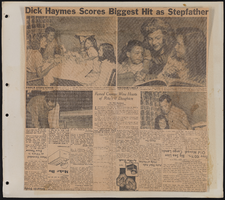Search the Special Collections and Archives Portal
Search Results
Sherwin "Scoop" Garside Photographs
Identifier
Abstract
The Sherwin “Scoop” Garside Photographs contain photographs from journalist and photographer “Scoop” Garside from 1907 to 1969. The photographs primarily depict events and buildings in Southern Nevada, including construction of the Hoover (Boulder) Dam, the Helldorado Parade in Las Vegas, Nevada, hotels and casinos, schools, and social events. The photographs also depict the Garside Family, including Las Vegas Review-Journal owner Frank Garside, “Scoop” Garside’s father.
Archival Collection
Nevada Women’s Conference Photograph Collection
Identifier
Abstract
The Nevada Women’s Conference Photograph Collection depicts the statewide women’s conference held in June 1977 in Las Vegas, Nevada. The photographs include keynote speaker Gloria Steinem, event organizers, workshops, volunteers, and musical performances.
Archival Collection
Junior League of Las Vegas Photograph Collection
Identifier
Abstract
The Junior League of Las Vegas Photograph Collection contains photographic prints and negatives, as well as postcards of locations in and around Las Vegas, Nevada between approximately 1900 and 1980. Early photographs in the collection offer views of the Las Vegas townsite, buildings, railroads, the Las Vegas High School, Overland Hotel, Arizona Club, and residential areas. Other photographs during this time depict the Hoover Dam (Boulder Dam) construction and Death Valley, California. Later photographs show the University of Nevada, Las Vegas (UNLV) campus, downtown Las Vegas, and the Las Vegas Strip.
Archival Collection
Hoggard, Mabel, 1905-1989
Mabel Hoggard was the first licensed African-American educator in Nevada. Hoggard taught primarily first and second grade at various elementary schools throughout Clark County, Nevada from 1946 until her retirement in 1970. The schools she taught at included Westside Elementary, Matt Kelly Elementary, Highland Elementary, and C.V.T. Gilbert Elementary, all located in Las Vegas, Nevada.
Person

Grand Hôtel du Louvre, menu, December 16, 1875
Date
Archival Collection
Description
Text
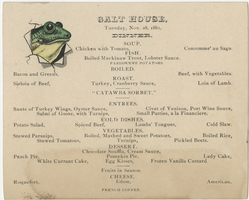
Galt House, menu, Tuesday, November 28, 1882
Date
Archival Collection
Description
Text
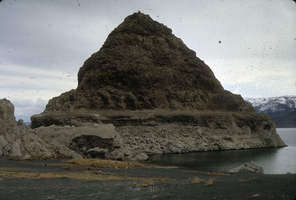
Slide of a tufa deposit in Pyramid Lake, Nevada, circa 1970s
Date
Archival Collection
Description
Image
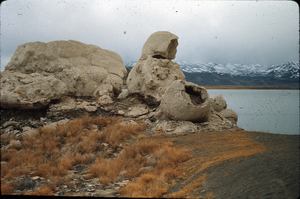
Slide of the rock formation known as The Squaw and Her Basket, Pyramid Lake, Nevada, circa 1970s
Date
Archival Collection
Description
Image
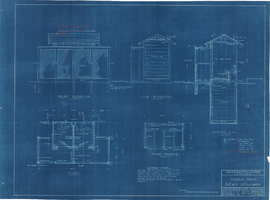
Los Angeles & Salt Lake Railroad Company double privy: architectural drawing
Date
Archival Collection
Description
From Union Pacific Railroad Collection (MS-00397). The scales are noted in the drawing. The bottom of the drawing says, "Material-Finish: All Finish Lumber Unless Otherwise Noted Shall Be [Opsas?] Wood Work Of Vault Shall Be O.P Rough. Exterior Of Privy Including Both Sides Of Door And Door Jamb: Also Wood Lattice Screen On All Sides Shall Be Painted With 3 Coats C.S. Lead & Oil Paint As Directed. Doors Shall Be Hung On 3 1/2" x 3 1/2" Botts. Doors Shall Be Provided With Rim Latch Knob Lock And Iron Barrel Bolt. Revisions: Added Vent Stacks, Seat Cover, Double Floor & Floor Shoe".
The bottom corner of the drawing states, "Union Pacific System L.A. & S.L.R.R. Double Privy 5'x8' With Lattice Screen. Ass't Chief Engineer's Office. Los Angeles, Calif. Drawn By E.C.B. Traced By E.C.B. Checked By F.W.G. Date June 14, 1926. Scale As Noted. Revised May 5. 1927. Drawing No. 15637".
Also written on the drawing: "Two to be built at East Yard, Calif. One ' ' Big Springs, Nev. ' ' Las Vegas, Nev. ' ' Borden, Utah. ' ' Elgin, Nev. 1927. ' ' Dry Lake, Nev. 1927. ' ' Wann ' ' 1928 [crossed out]."
Image

